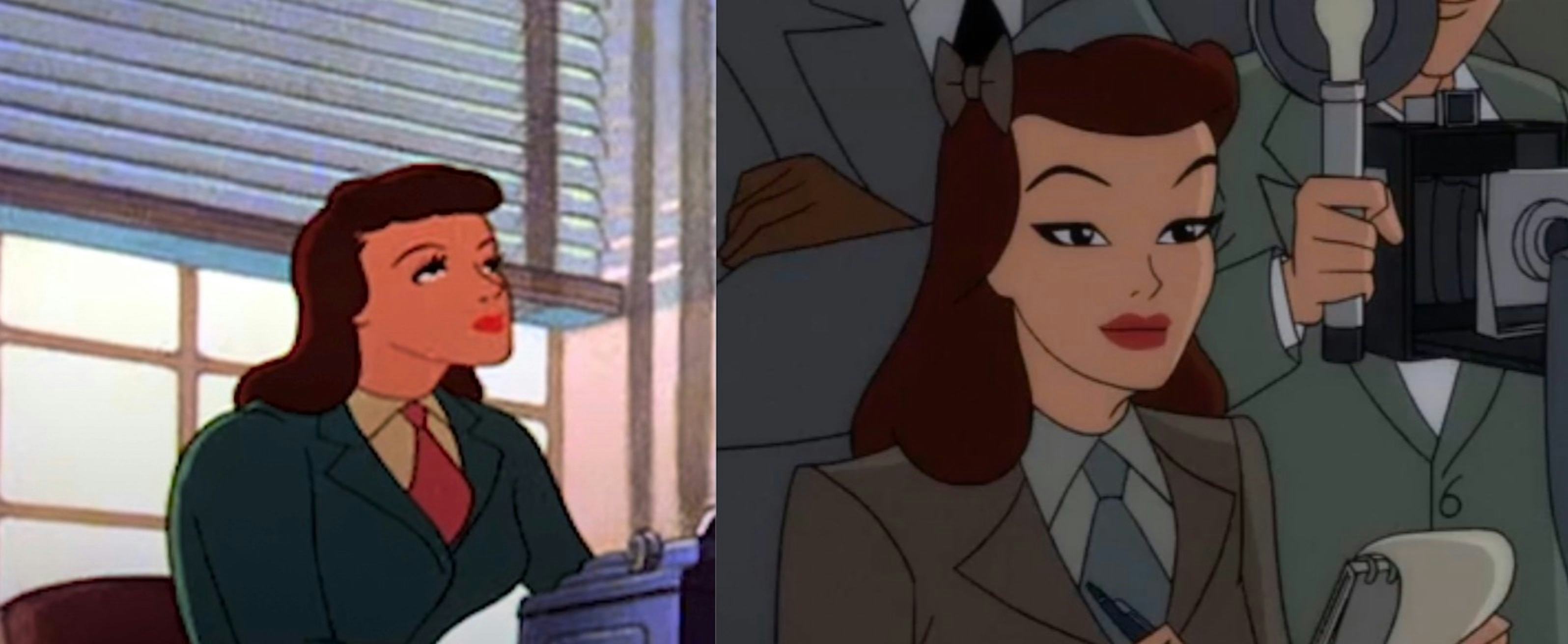
You can’t keep a good reporter down. There are an astounding number of journalists and photojournalists in the world of superheroes and one of the best of them all is easily Lois Lane; Superman’s paramour and crack reporter for the Daily Planet. And, while Lois interacting with the world of Batman instead of Superman on screen is rare (and mostly limited to Amy Adams in the Zack Snyder films) Lois, of course, does appear alongside Batman in plenty of DC Comics.
But now, she’s snuck in an appearance in the best new on screen version of Batman in years: the new Prime Video animated series Batman: Caped Crusader. It’s a blink-and-you’ll-miss-it-cameo, but it looks like a 1940s version of Lois Lane has left Metropolis to cover the events of Gotham City.
Mild spoilers ahead.
In the fourth episode of Batman: Caped Crusader, during a press conference concerning the actions of the Batman, one of the reporters in the crowd seems to have been drawn as a direct homage to Lois Lane, as she appeared in the groundbreaking animated series Superman of film shorts, which began in 1941 and were produced by Fleischer Studios, and later, Famous Studios.

Since Superman’s first appearance in Action Comics #1 in 1938, Lois Lane has been right there, a no-nonsense reporter molded not on real reporters of the 1930s, but instead, largely created as an homage to film serial reporter character called Torchy Blane. (Who, coincidentally or not, was eventually played by an actress named Lola Lane, though Glenda Farrell originated the character.) But the first actresses to give Lois Lane life were radio performers, starting with Rolly Bester Helen Choate and, perhaps most famously, Joan Alexander in the 1940s radio serial The Adventures of Superman. Because this serial began just two years after the debut of Superman in the comics, much of the mythology of Lois and Clark was in flux at this point. By 1941, when the first Fleischer Studios animated short appeared in theaters, Superman has only recently started flying. (While some sources state the Fleischer cartoons are the official origin of his flight powers, there are some panels of earlier comics that depict him flying. Plus, in the radio episodes, we’re clearly meant to think he’s flying.)
The larger reality is the animated versions of Lois Lane and Clark Kent from the radio show were essentially the same versions from the radio show, played by Joan Alexander and Bud Collyer. These versions were more or less faithful adaptations of how Lois and Clark appeared in the comics of the time, too. Superman creators Jerry Siegel and Joe Shuster had been inspired by many beloved icons of the era, and Siegel’s first sketch was based on the model Jolan Kovacs. In the 1950s, Schuster wrote and illustrated adult magazines to make ends meet, which historians have pointed out featured thinly disguised versions of Clark and Lois in kinky situations.
But ultimately, the suit-and-tie wearing version of Lois was popularized by the Fleischer/Famous cartoons. Lois doesn’t wear it in all of the episodes, but starting with the very-famous episode second episode, “The Mechanical Monsters,” Lois wears a tie and suit with a skirt. Later, in the episode “The Mummy Strikes,” she’s wearing a green blazer and tie, very similar to her beige ensemble in Batman: Caped Crusader.
Assuming, of course, this is meant to be Lois Lane in Caped Crusader. Because the continuity of this version of Batman is essentially new, any homages to other Batman characters, or related DC characters, might simply be fun Easter eggs. But because Caped Crusader seems to take place in a kind of anachronistic/alterante version of the 1940s or 1950s, the appearance of some kind of version of Lois Lane makes perfect sense. While its hard to imagine Superman existing in this version of Batman’s world, that doesn’t mean he’s not out there, somewhere. The future of this moody, noir Batman universe is unclear. But, if that is truly Lois Lane, then that means the Man of Steel isn’t far behind the Caped Crusader.







